
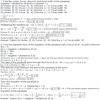
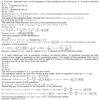
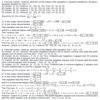
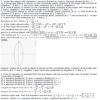
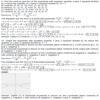



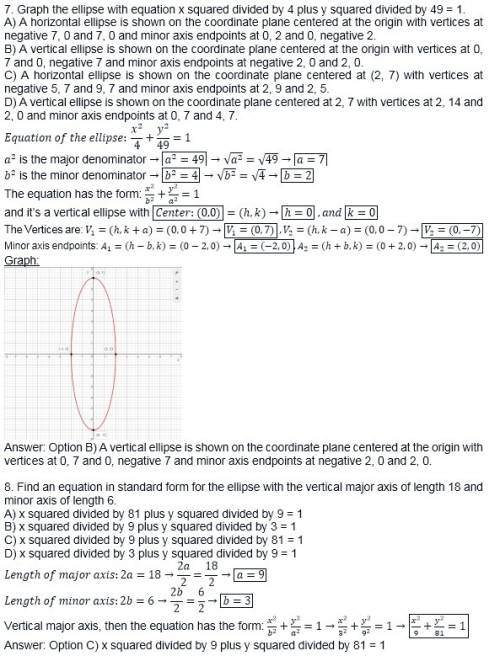












 2
2 C
Step-by-step explanation:
The distance from the focus to the co-vertex is the length of the semi-major axis. Expressed in terms of the Pythagorean theorem, that relationship matches the description in selection C:
The square of the semi-minor axis is equal the the difference between the square of the semi-major axis and the square of the distance from the center to a focus.
 2
2 C
Step-by-step explanation:
The distance from the focus to the co-vertex is the length of the semi-major axis. Expressed in terms of the Pythagorean theorem, that relationship matches the description in selection C:
The square of the semi-minor axis is equal the the difference between the square of the semi-major axis and the square of the distance from the center to a focus.
 1
1 (1) 83.764 million miles
(2) 52.766 million miles
(3) 
Step-by-step explanation:
Let the origin C(0,0) be the center of the elliptical path as shown in the figure, where the location of the sun is at one of the two foci, say f.
The standard equation of the ellipse having the center at the origin is

where  and
and  are the semi-axes of the ellipse along the x-axis and y-axis respectively.
are the semi-axes of the ellipse along the x-axis and y-axis respectively.
Let the points P and A represent the points of perihelion (nearest to the sun) and the aphelion (farthest to the sun) of the closest planet Mercury.
Given that,
CP=46 million miles and
CA=70 million miles.
So,  is the semi-minor axis and
is the semi-minor axis and  is the semi-major axis.
is the semi-major axis.
Let the distances on the axes are in millions of miles. So, the coordinates of the point P and A are  and
and  respectively.
respectively.
(1) From the distance formula, the distance between the perihelion and the aphelion is
 million miles.
million miles.
(2) Location of the Sun is at focus,  , of the elliptical path.
, of the elliptical path.
From the standard relation, the distance of the focus from the center of the ellipse, c, is

where  and
and  are the semi-major axis and the eccentricity of the ellipse.
are the semi-major axis and the eccentricity of the ellipse.
The eccentricity of the ellipse is

 .
.
Hence, from the equation (i) the distance of the Sun from the center of the elliptical path of the Mercury is
 million miles.
million miles.
(3) From the equation (i), the equation of the elliptical orbit of Mercury is



 15
15 the answer is 19.4m
Step-by-step explanation:
 15
15 the answer is 19.4m
Step-by-step explanation:


It will provide an instant answer!
